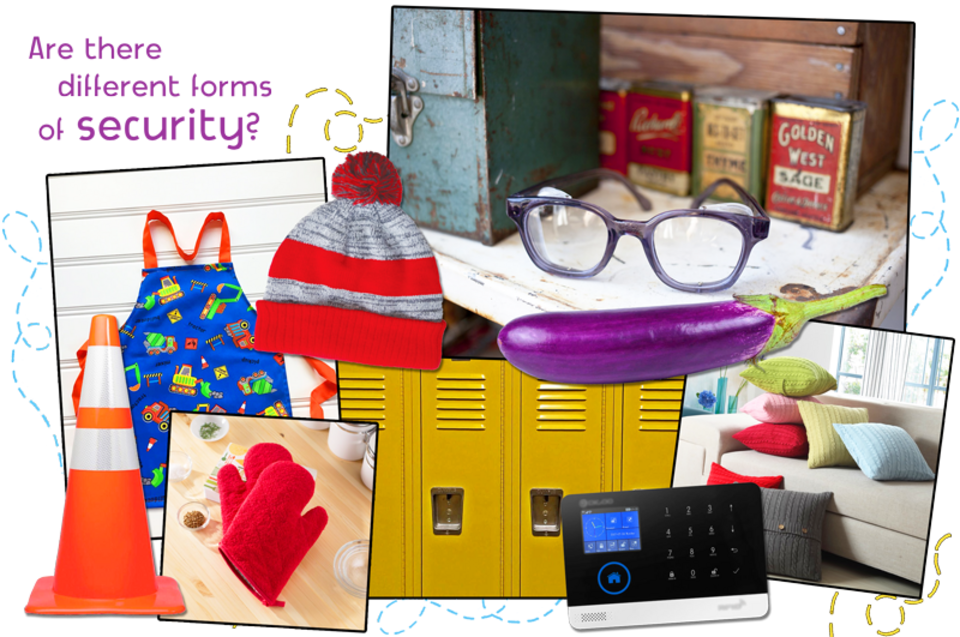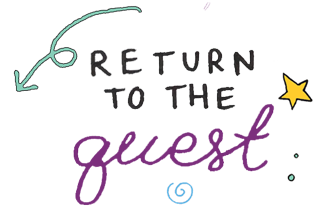
The Safety Objects Service
| Objective: To make your views on the concept of safety shine by calling up the SOS—the Safety Objects Service! |
Duration: 30 to 60 minutes
Material:
- Your imagination
- Safety items
- Sheets of paper and pencils
Instructions:
What everyday objects valiantly protect us from unsuspected dangers? The chair that prevents us from falling? The socks that warm our feet? The kitchen mitt that keeps our hands from getting burnt? In this activity, your mission is to imagine the SOS—Safety Objects Service—that will answer calls from your family members to warn them about household hazards and encourage them to act safely.
...
- Imagine your show. The SOS warns its callers through comedic cautionary tales—that is, funny stories in which a person fails to use the required item to do something, thus finding themselves in a falsely serious situation. Choose at least three objects that help us in our lives and for each one, write a funny cautionary tale that this object will tell to warn callers of what could happen if they forget to use it. These objects will take turns answering the phone to tell their cautionary tale!
- Inspiration: Here's an example of a fun warning to inspire you. You'll notice that the story is written like a poem or slam to give the performance some style!
"SOS, Safety Objects Service, this is Apron! How can I help you?
Want me to warn you about the dangers of unprotected cooking?
Sure thing!
Let me tell you about the tragedy of a boy named Matthew.
Matthew loved life, lunch and hockey,
But most of all, Matthew loved his Granny.
For Christmas, his Granny said to him, "I knitted you a sweater
to keep you warm for winter.
Put it on! Oh Matthew,
it looks so good on you!"
Well, it’s not that he didn’t like a sheepy,
he just found their wool a bit itchy.
But he loved his Granny enough
to put on the sweater without any huff or puff.
She was happy.
So was he.
By then it was time to bake...
and here comes the wreck.
Beaming with generosity,
the boy said, "Granny, don't worry
I'll put the scones in the oven!"
But then—who knew this could happen?—
a rebellious scone jumped out of the tray
cartwheeled onto the sweater and ran away,
leaving the boy to lament
the greasy stain on his garment.
The moral of this epic?
When it comes to safety, an apron is your best pick!”
- Inspiration: Here's an example of a fun warning to inspire you. You'll notice that the story is written like a poem or slam to give the performance some style!
- Prepare your show. Set up the right stage for the show. Maybe you can set up a table with a telephone, like a receptionist's desk. Make sure you have all the safety objects you're going to present nearby. When an object is about to answer a call, you can display it on the table, or even use it as a puppet by making it pick up the phone and act as if it were alive!
- Present your show. When everything is ready, invite your family to take their seats. Tell them that it's an interactive show: they will have to participate by pretending to dial a number and call the SOS. When they do, you’ll be answering with one of the objects and sharing its cautionary tale!
- Think about your show. Was it easy or difficult to put on a show with safety objects? Together with the members of your audience, think about the things that make you feel safe and ask yourself: Are there different forms of safety? Does technology always make us safer? Is more safety always a good thing? Maybe there are things that are even more important than safety...
...
Bonus: Improvise with your audience to imagine that you call the opposite service: the ROL—Risky Objects Line! The objects that answer this number are objects that encourage people to take risks by telling stories in which people didn't dare to take a risk... to warn callers against too much safety! Are some risks necessary? Is the idea "nothing risked, nothing gained" true? Who decides what is too risky? |

| Tricks for tots: If you prefer, instead of making up several tales, you can simply choose three everyday objects that keep us safe and imagine the message that each of them wants to express to your audience. It's like a safety announcement, but more fun! For example, a vacuum cleaner could say, "Don't forget to use me or you'll be eating dust patties for lunch!" Finally, ask yourself these questions: Do you have objects that help you feel safe? Can you ever be in danger without realizing it? Is safety the most important thing of all? Why or why not? |
| Tips for teens: Science fiction author Alain Damasio uses the term "techno-cocoon” to refer to the comfortable bubble we make for ourselves with technologies like smartphones or vacuum cleaners… which could even be too comfortable! Can comfort be dangerous? Is it possible to want things to be difficult? Why or why not? What can we learn from discomfort? |
Share your creative reflections by sending them via email.
Include photos of your projects and notes of your thoughts, as well as your first name and your age!


